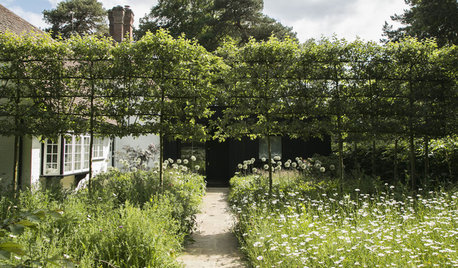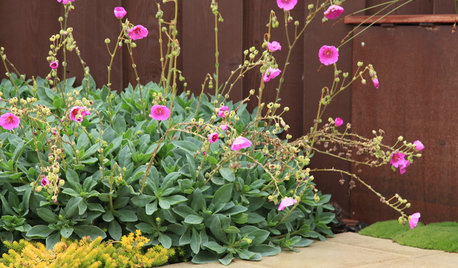Apple Tree Care
dashinggade
11 years ago
Related Stories

EDIBLE GARDENSHow to Add an Apple Tree to Your Edible Garden
Readily available, beautiful and fragrant, apple trees offer four-season interest along with crisp, juicy fruit
Full Story
GARDENING AND LANDSCAPINGCrab Apple Trees Set Off a Stylish English Courtyard
A structure of pleached crab apple trees, bordered by a wildflower meadow, links a minimalist addition to an old house in Buckinghamshire
Full Story
GARDENING GUIDESTree Care: Common Tree Diseases and What to Do About Them
Learn to recognize trees that may be affected by diseases or pests so you can quickly take action
Full Story
GARDENING GUIDESHow to Keep Your Trees Healthy
Ensure your trees’ vigor for years to come with these tips for protecting roots, watering effectively and more
Full Story
HOLIDAYSHow to Care for Your Christmas Tree
Keep your tree looking lush until the last ornament is packed away with these tips for watering, using stands and more
Full Story
ARCHITECTURESimplicity vs. Simpleness in Architecture — and Why You Should Care
Don't confuse these two concepts; your home's beauty and ability to inspire are at stake
Full Story
GROUND COVERS10 Succulents That Make Pretty, Easy-Care Ground Covers
These low-growing succulents create interest in the drought-tolerant garden
Full Story
GARDENING AND LANDSCAPINGCrazy for Fruit Trees
Whether a single citrus or a mini apple orchard, even the smallest landscape space can bear deliriously delicious fruit
Full Story
GARDENING GUIDESSpring Citrus Care Reaps Months of Sweet Rewards
Learn how to tend citrus trees in spring and ways to preserve their delicious fruit
Full Story
FARM YOUR YARDIf You Have Room for Only One Fruit Tree ...
Juice up a small garden with one of these easier-care or worth-the-effort fruit trees for a mild climate
Full Story






calistoga_al ca 15 usda 9
dashinggadeOriginal Author
Related Professionals
New Bedford Landscape Architects & Landscape Designers · Comstock Park Landscape Architects & Landscape Designers · Ballenger Creek Landscape Architects & Landscape Designers · Canyon Lake Landscape Contractors · Fair Lawn Landscape Contractors · Fairfield Landscape Contractors · Fort Wayne Landscape Contractors · Fuquay-Varina Landscape Contractors · Golden Gate Landscape Contractors · Lantana Landscape Contractors · North Lauderdale Landscape Contractors · Snoqualmie Landscape Contractors · Soddy Daisy Landscape Contractors · Selma Landscape Contractors · North Hills Landscape Contractorsalan haigh
dashinggadeOriginal Author
alan haigh
dashinggadeOriginal Author
alan haigh
alan haigh
dashinggadeOriginal Author
alan haigh
mrsg47